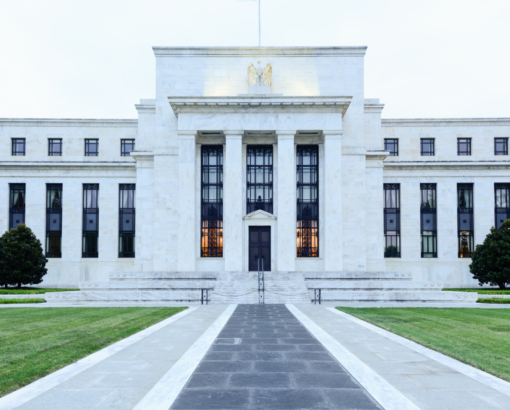In the “good old days”, economic forecasts were a starting point for asset management. Despite the difficulty of forecasting, many investors tried heroically to divine the future because it was believed that the performance of the economy drove the markets. In the past three decades, however, we would argue that the relationship has reversed. It probably all began in 1987, when the Greenspan Fed “rescued” Wall Street after the 1987 crash. That event was a market, not economic, event. We will never know what the economic impact would have been because the Fed’s actions spared us the experience. Importantly, however, the Fed’s response created an expectation that economic and market events demanded a monetary policy response.
From those humble beginnings in 1987, the Fed has moved to cushion the blow of geopolitical events (Iraq invading Kuwait and the Gulf War), hedge fund collapse (Long Term Capital Management in 1998), the march of time (Y2k and the fears of systemic collapse), exploding stock market bubbles (the dot com crash of 2000-2002), exploding real estate bubbles (the housing crisis and Great Recession), slow economic growth (the bumbling recovery from the Great Recession) and, most recently, the COVID inspired lockdown of the economy. The progression of Fed involvement has followed a clear path. Each event is an “emergency” that requires successively larger and more creative interventions.
Did the Fed save the US and global economies from misery and woe? We will never know for sure. What they have done, however, is create a dependency on monetary largess that we believe is unhealthy. Since the Great Recession, each time the Fed has hinted at (see Taper Tantrum 2013) or actually begun to reduce monetary stimulus (see December 2018), the markets (but not necessarily the economy) have had a fit, and the Fed has quickly retreated.
This is critical to understand because if Fed policy has been the single largest driver of asset markets, then how the Fed moves is far more important to understand than what happens to GDP in the next quarter. This harsh reality must be acknowledged and it is critical that investors separate what the Fed “should do” from what it will do. As long as the Fed remains accommodative, asset markets are likely to continue to rise. The Fed will, from time to time, suggest that prudence will carry the day as they did at their June meeting. However, “prudence” was limited to suggesting that they might think about raising interest rates in two years. That is a far cry from the “good old days” when the Fed would surprise the markets with 50 basis point rate hikes.
Much of the discussion about what the Fed should do or will do revolves around the outlook for inflation. We have been in the camp for many years that all of the monetary and fiscal stimulus (i.e., deficit spending) is inflationary. That has not shown up in reported inflation measures and that probably indicates flaws in those measures. Arguably, it has shown up in asset prices which people who own assets don’t seem to mind. In the past six months, however, we seem to have reached a tipping point as inflation has finally spilled into the “real” economy.
Whether this unhappy development is transitory (the Fed’s view and fervent hope) or a sign of a return to the bad old days of the 1970s when prices shot higher for years is a central focus on the markets today. If inflation is transitory, the Fed will ignore it and keep stimulating, likely supporting markets. If inflation isn’t a temporary phenomenon, then the Fed will be in a pickle because the traditional remedy for inflation is a hike in interest rates to slow the economy and reduce price pressures. Given the way markets have reacted (see 2013 and 2018), it isn’t hard to see a sharp correction in the markets if the Fed actually reduced stimulus. Because this has been intolerable for the Fed, many observers believe that the Fed cannot or will not increase rates even if inflation is a problem.
If this the case, then the solution is to keep buying assets, reduce cash and bonds (which surrender purchasing power to inflation) and enjoy the ride. That seems simple and intuitive until you consider valuations.
After thirteen years of extraordinary monetary and fiscal stimulus all around the world, risk assets are expensive. This includes stocks, bonds, real estate, commodities and precious metals. Some assets are relatively cheaper than other assets (think commodities and foreign stocks). Some assets are, depending upon the measurement, more expensive than they have ever been (US stocks). We will revisit the urge to clutter our comments with the usual array of charts and graphs to prove the point. We will, instead, simply remind all investors that the single greatest predictor of investment outcomes is the valuation of your asset at the time of purchase. If you buy something cheap, the slings and arrows of outrageous fortune can be overcome and lead to a happy end. If you buy something for a high price, lots of good things usually need to happen, in a particular order, to have a happy outcome.



